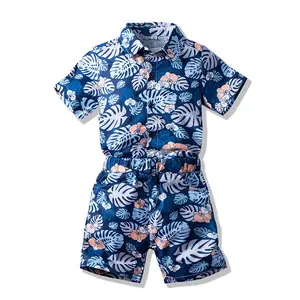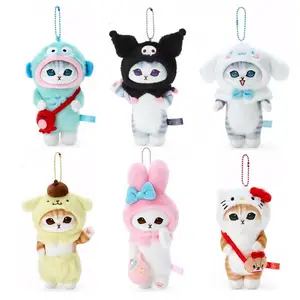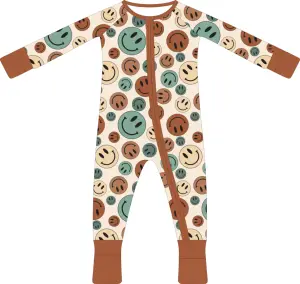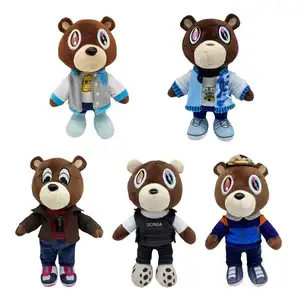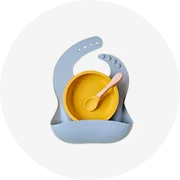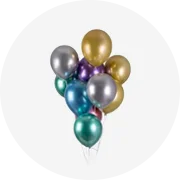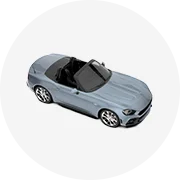Phổ biến trong ngành của bạn






Nhà Máy giá tự động 3in1 Pet nước đóng chai điền đóng nắp máy tinh khiết khoáng chất nước uống dây chuyền sản xuất
234.173.362 ₫ - 279.989.889 ₫
Đơn hàng tối thiểu: 1 Bộ

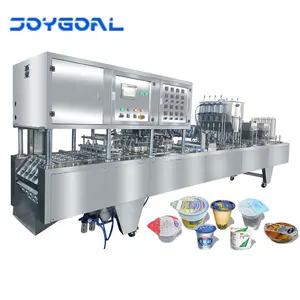





Tự Động Jelly Pudding Sữa Chua Cốc Nước Điền Và Niêm Phong Máy Cup Cake Filling Machine
157.812.483 ₫ - 725.428.347 ₫
Đơn hàng tối thiểu: 1 Bộ







Doanh Nghiệp Nhỏ nước máy rót chai trọng lực 20 lít nước đóng chai Máy chiết rót
25.453.627 ₫ - 33.089.715 ₫
Đơn hàng tối thiểu: 1 Bộ







Bán buôn giá 100-1000ml ly bia chai nước Mật ong xà phòng đóng chai Máy làm đầy chất lỏng
54.979.833 ₫ - 55.488.906 ₫
Đơn hàng tối thiểu: 1 Bộ







Đầy đủ tự động 3 trong 1 Pet nhựa chai nhỏ tinh khiết uống nước khoáng điền máy cho dây chuyền sản xuất nước
229.082.636 ₫ - 1.267.590.585 ₫
Đơn hàng tối thiểu: 1 Bộ






Tự Động Quay 3 Trong 1 Nhựa Pet Đóng Chai Nước Làm Đầy Máy Cho Tinh Khiết Khoáng Tinh Khiết Mùa Xuân Nước Uống
343.623.954 ₫
Đơn hàng tối thiểu: 1 Bộ






Full Set Hoàn Toàn Tự Động PET Nhựa Chai Nhỏ Uống Nước Khoáng Dây Chuyền Sản Xuất/Chai Máy Chiết Rót Nước
330.897.141 ₫ - 7.636.087.860 ₫
Đơn hàng tối thiểu: 1 Bộ






Dây Chuyền Sản Xuất Nước Khoáng Uống Tinh Khiết Chai Nhỏ Bằng Nhựa PET Hoàn Chỉnh Tự Động/Máy Chiết Rót Nước Chai
318.170.328 ₫ - 325.806.416 ₫
Đơn hàng tối thiểu: 1 Bộ






Giá Tốt Hoàn Toàn Tự Động 3 Trong 1 Chai PET Nước Tinh Khiết Máy Nạp Đầy
890.876.917 ₫
Đơn hàng tối thiểu: 1 Bộ






CGF8-8-3 hoàn toàn tự động 3 trong 1 Chai nhựa PET máy làm nước tinh khiết cho dây chuyền sản xuất nước
152.696.304 ₫ - 178.149.930 ₫
Đơn hàng tối thiểu: 1 Cái






Đầy Đủ Tự Động Hoàn Chỉnh Pet Chai Tinh Khiết/Nước Khoáng Điền Máy Sản Xuất/Line/Thiết Bị
318.170.328 ₫
Đơn hàng tối thiểu: 1 Bộ
Các tìm kiếm liên quan:
kenya pet chai nước máychai nước cho thú cưngpet chai nước máy alibabanhà máy làm đầy nước chai nhựadây chuyền sản xuất nước chai petphụ chai pet nướcchai nước phụ máy nhà cung cấpdây chuyền sản xuất chai nước uốngpet chai nước máy chế biến5 lít pet chai nước phụphụ kiện chai nhựa tự độngmáy nước chai petvật nuôi cho gói máy nướcpet chai nước máy làmthiết bị làm nước chai pet






500ml chai PET 4000bph uống nước tinh khiết rót chai nước máy đóng chai
2.545.362.620 ₫ - 2.748.991.630 ₫
Đơn hàng tối thiểu: 1 Bộ






Cốc Tiêu Cực Tự Động/Chai Pet Giá Máy Chiết Rót Nước Tinh Khiết
496.345.711 ₫ - 509.072.524 ₫
Đơn hàng tối thiểu: 1 Bộ






Dây Chuyền Sản Xuất Nước Khoáng Uống Tinh Khiết Chai Nhỏ Hoàn Toàn Tự Động Bằng Nhựa PET/Máy Chiết Rót Nước Chai
305.443.515 ₫ - 509.072.524 ₫
Đơn hàng tối thiểu: 1 Bộ






Đầy đủ Tự Động Hoàn Chỉnh PET Chai Tinh Khiết/Nước Khoáng Điền Máy Sản Xuất/Line/Thiết Bị
330.897.141 ₫
Đơn hàng tối thiểu: 1 Bộ






Alps Đầy Đủ Tự Động Hoàn Chỉnh Chai Pet/Tinh Khiết Nước Uống Khoáng Sản Xuất Máy/Line/Thiết Bị
890.876.917 ₫ - 1.145.413.179 ₫
Đơn hàng tối thiểu: 1 Bộ





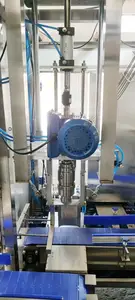
Tự Động Hoàn Chỉnh Pet Nhựa Nhỏ Chai Tinh Khiết Uống Nước Khoáng Dây Chuyền Sản Xuất/Chai Nước Máy Làm Đầy
127.268.131 ₫ - 152.721.758 ₫
Đơn hàng tối thiểu: 1 Bộ






Tự Động Quay Loại 3 Trong 1 Nhựa PET Đóng Chai Nước Làm Đầy Máy Cho Tinh Khiết Khoáng Tinh Khiết Mùa Xuân Nước Uống
305.443.515 ₫
Đơn hàng tối thiểu: 1 Bộ






Dây Chuyền Sản Xuất Nước Khoáng Uống Tinh Khiết Chai Nhỏ Bằng Nhựa PET Hoàn Toàn Tự Động Trung Quốc Máy Chiết Rót Nước
152.467.221 ₫ - 175.604.568 ₫
Đơn hàng tối thiểu: 1 Bộ






Nhà Máy Giá hoàn chỉnh đầy đủ tự động Chai PET tinh khiết nước khoáng Máy chiết rót
279.989.889 ₫ - 330.897.141 ₫
Đơn hàng tối thiểu: 1 Bộ






Dây Chuyền Sản Xuất Nước Tinh Khiết Uống Chai Nhỏ Bằng Nhựa PET Hoàn Toàn Tự Động Máy Chiết Rót Nước Khoáng
1.272.681.310 ₫
Đơn hàng tối thiểu: 1 Bộ






Tự Động 3 Trong 1 Pet Chai Uống Nước Tinh Khiết Máy Làm Đầy Cho 500Ml Chai Khoáng Sản Nước Tinh Khiết
483.618.898 ₫ - 534.526.151 ₫
Đơn hàng tối thiểu: 1 Bộ






Thực Phẩm & Đồ Uống Máy Móc PET Chai Nước Tinh Khiết Lỏng Máy Chiết Rót Để Bán
381.804.393 ₫
Đơn hàng tối thiểu: 1 Cái






Máy công nghiệp nhỏ 2000bph tự động 3in1 chai thủy tinh Pet khoáng tinh khiết bảng uống nước điền máy dây chuyền sản xuất
381.804.393 ₫
Đơn hàng tối thiểu: 1 Bộ






BKDZ-009 Hoàn Thành Nước Khoáng Làm Dây Chuyền Sản Xuất/Thiết Bị Đóng Chai/Chai PET Uống Nước Tinh Khiết Máy Chiết Rót
343.623.954 ₫
Đơn hàng tối thiểu: 1 Bộ






Đầy Đủ Thiết Lập Hoàn Toàn Tự Động PET Nhựa Chai Nhỏ Uống Tinh Khiết Nước Khoáng Dây Chuyền Sản Xuất/Chai Nước Máy Chiết Rót
279.989.889 ₫ - 330.897.141 ₫
Đơn hàng tối thiểu: 1 Bộ





Máy Chiết Rót Nước Chai PET Tự Động/Dây Chuyền Sản Xuất Nước Tinh Khiết (Chai 5 Lít)
763.608.786 ₫ - 903.603.731 ₫
Đơn hàng tối thiểu: 1 Bộ






Hoàn Toàn Tự Động PLC Điều Khiển Nước Ép Lỏng Đồ Uống Nước Ngọt Nước Tinh Khiết PET Chai Nhựa Điền Máy Đóng Gói
432.686.192 ₫ - 610.861.576 ₫
Đơn hàng tối thiểu: 1 Bộ






Hoàn Toàn Tự Động Hoàn Chỉnh PET Chai Tinh Khiết/Nước Khoáng Điền Máy Móc Sản Xuất/Line/Thiết Bị Trên Bán
305.443.515 ₫ - 343.623.954 ₫
Đơn hàng tối thiểu: 1 Bộ






Chai PET làm đầy dây chuyền sản xuất tinh khiết nước khoáng làm đầy máy móc
356.350.767 ₫ - 381.804.393 ₫
Đơn hàng tối thiểu: 1 Bộ






2019 Giá Thấp Chất Lỏng Tự Động Khoáng Sản/Mùa Xuân/Uống/Nước Tinh Khiết Chai PET Dòng Nhà Máy Làm Đầy/Đóng Chai /Máy Đóng Gói
509.072.524 ₫
Đơn hàng tối thiểu: 1 Bộ






2000ml Chai PET có ga nước giải khát làm đầy đóng nắp nước tinh khiết trạm đóng gói nước máy
328.097.242 ₫
Đơn hàng tối thiểu: 1 Bộ






3 Trong 1 Tự Động Chai Pet Nước Tinh Khiết Nước Khoáng Máy Chiết Rót
763.608.786 ₫
Đơn hàng tối thiểu: 1 Cái






Đầy Đủ Thiết Lập Hoàn Chỉnh Tự Động Pet Nhựa Nhỏ Chai Uống Nước Khoáng Dây Chuyền Sản Xuất/Chai Nước Máy Làm Đầy
445.438.459 ₫ - 470.892.085 ₫
Đơn hàng tối thiểu: 1 Bộ






Tự động 5 gallon Pet PC Thùng tinh khiết nước khoáng Chai Rửa Máy chiết rót
241.809.449 ₫ - 254.536.262 ₫
Đơn hàng tối thiểu: 1 Bộ






Hoàn toàn tự động không có ga nước giải khát khoáng tinh khiết nước pet chai rửa điền máy đóng nắp
424.210.135 ₫ - 509.047.071 ₫
Đơn hàng tối thiểu: 1 Bộ






Dây Chuyền Sản Xuất Đóng Chai Tự Động Hoàn Chỉnh Máy Chiết Rót Nước Khoáng Tinh Khiết Cho Chai Pet
1.565.398.012 ₫
Đơn hàng tối thiểu: 1 Bộ






20000BPH Máy Móc Công Suất Dễ Dàng Hoạt Động PET Chai Nhựa Nước Khoáng Máy Chiết Rót Từ Ấn Độ
1.018.145.048 ₫ - 1.909.021.965 ₫
Đơn hàng tối thiểu: 1 Đơn vị






Full Automatic 2000BPH Complete PET Bottle Pure mineral water filling machine price plant machinery
381.804.393 ₫
Đơn hàng tối thiểu: 1 Cái
Các danh mục hàng đầu
Giới thiệu về tinh khiết chai nước pet điền máy
Nếu bạn đang tìm kiếm người bạn đồng hành âu yếm hoàn hảo cho con, cháu gái hoặc cháu trai của mình, thì không đâu khác ngoài Alibaba.com để có được điều tốt nhất. tinh khiết chai nước pet điền máy. Có sẵn với nhiều loại màu sắc và giống đáng yêu như mèo, gấu, chó, voi, chim, hổ, v.v. những cái này. tinh khiết chai nước pet điền máy chắc chắn sẽ làm hài lòng trẻ em và trẻ em ở mọi người lớn như nhau .. tinh khiết chai nước pet điền máy là một món đồ chơi quan trọng để trẻ em nuôi dưỡng sự đồng cảm và cũng hoàn hảo để món quà cho một người quan trọng khác.
. tinh khiết chai nước pet điền máy được cung cấp trên Alibaba.com được làm từ những vật liệu chất lượng tốt nhất đã trải qua các vòng kiểm tra an toàn để đảm bảo sức khỏe của người dùng. Chúng không có bất kỳ nhựa hoặc dây sắc nhọn nào bên trong và được thiết kế đặc biệt để đảm bảo rằng chúng không gây kích ứng da. Những cái này. tinh khiết chai nước pet điền máy được thiết kế để nhẹ cũng như mềm và dễ mang theo. Một số. tinh khiết chai nước pet điền máy cũng cung cấp các tính năng hấp dẫn bổ sung như khả năng tạo âm thanh và thậm chí ghi âm tin nhắn thoại.
tinh khiết chai nước pet điền máy có sẵn ở nhiều loại và bộ sưu tập khác nhau, chẳng hạn như vật nuôi trong nhà, động vật biển và động vật có nguy cơ tuyệt chủng. Những cái này. tinh khiết chai nước pet điền máy rất phù hợp để làm quà tặng và có sẵn ở các kích thước nhỏ cho nhà trẻ cũng như các kích thước lớn hơn có thể lên đến vài feet .. tinh khiết chai nước pet điền máy liên quan đến phim hoạt hình và các bộ phim hoạt hình cũng được cung cấp và chắc chắn sẽ là một hit với trẻ em.
Chọn giá mềm nhất. tinh khiết chai nước pet điền máy cho con bạn hoặc cho mục đích tặng quà trên Alibaba.com với giá thấp nhất mà không ảnh hưởng đến chất lượng .. tinh khiết chai nước pet điền máy người bán buôn và nhà cung cấp cũng chắc chắn tìm thấy ISO và các sản phẩm được chứng nhận CE với giá cả phải chăng khi mua số lượng lớn. Hãy yên tâm rằng các sản phẩm được cung cấp bởi những người bán và nhà sản xuất đáng tin cậy nhất, đều đã được kiểm tra an toàn.
. tinh khiết chai nước pet điền máy được cung cấp trên Alibaba.com được làm từ những vật liệu chất lượng tốt nhất đã trải qua các vòng kiểm tra an toàn để đảm bảo sức khỏe của người dùng. Chúng không có bất kỳ nhựa hoặc dây sắc nhọn nào bên trong và được thiết kế đặc biệt để đảm bảo rằng chúng không gây kích ứng da. Những cái này. tinh khiết chai nước pet điền máy được thiết kế để nhẹ cũng như mềm và dễ mang theo. Một số. tinh khiết chai nước pet điền máy cũng cung cấp các tính năng hấp dẫn bổ sung như khả năng tạo âm thanh và thậm chí ghi âm tin nhắn thoại.
Chọn giá mềm nhất. tinh khiết chai nước pet điền máy cho con bạn hoặc cho mục đích tặng quà trên Alibaba.com với giá thấp nhất mà không ảnh hưởng đến chất lượng .. tinh khiết chai nước pet điền máy người bán buôn và nhà cung cấp cũng chắc chắn tìm thấy ISO và các sản phẩm được chứng nhận CE với giá cả phải chăng khi mua số lượng lớn. Hãy yên tâm rằng các sản phẩm được cung cấp bởi những người bán và nhà sản xuất đáng tin cậy nhất, đều đã được kiểm tra an toàn.
